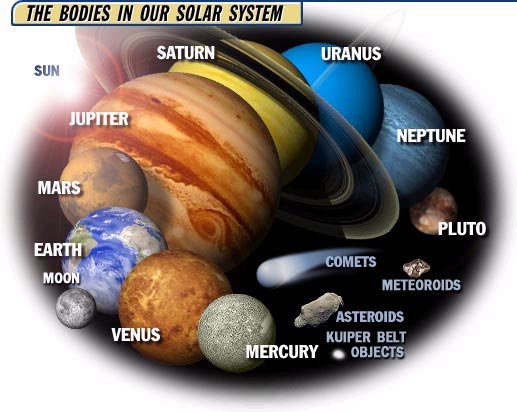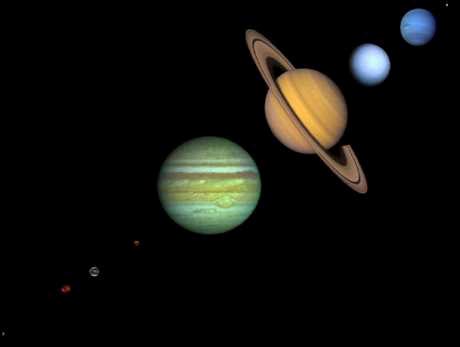BOOKS FOR YOU TO READ AND DOWNLOAD
- COMMUNICATION VIA GESTURE: A STUDY OF INDIAN CONTEXTS by M. S. Thirumalai, Ph.D.
- CIEFL Occasional Papers in Linguistics, Vol. 1
- Language, Thought and
Disorder - Some Classic Positions by
M. S. Thirumalai, Ph.D. - English in India: Loyalty and
Attitudes by
Annika Hohenthal - Language In Science
by
M. S. Thirumalai, Ph.D. - Vocabulary Education
by
B. Mallikarjun, Ph.D. - A CONTRASTIVE ANALYSIS OF HINDI AND MALAYALAM by V. Geethakumary, Ph.D.
- LANGUAGE OF ADVERTISEMENTS IN TAMIL by Sandhya Nayak, Ph.D.
- An Introduction to TESOL: Methods of Teaching English to Speakers of Other Languages by M. S. Thirumalai, Ph.D.
- Transformation of Natural Language into Indexing Language: Kannada - A Case Study by B. A. Sharada, Ph.D.
- How to Learn Another Language? by M.S.Thirumalai, Ph.D.
- Verbal Communication with CP Children by Shyamala Chengappa, Ph.D. and M.S.Thirumalai, Ph.D.
- Bringing Order to Linguistic
Diversity - Language Planning in the British Raj by
Ranjit Singh Rangila,
M. S. Thirumalai,
and B. Mallikarjun
REFERENCE MATERIAL
- Lord Macaulay and His Minute on Indian Education
- Languages of India, Census of India 1991
- The Constitution of India: Provisions Relating to Languages
- The Official Languages Act, 1963 (As Amended 1967)
- Mother Tongues of India, According to 1961 Census of India
BACK ISSUES
- FROM MARCH 2001
- FROM JANUARY 2002
- INDEX OF ARTICLES FROM MARCH, 2001 - NOVEMBER 2003
- INDEX OF AUTHORS AND THEIR ARTICLES FROM MARCH, 2001 - NOVEMBER 2003
- E-mail your articles and book-length reports to thirumalai@bethfel.org
or send your floppy disk (preferably in Microsoft Word) by regular mail
to:
M. S. Thirumalai
6820 Auto Club Road #320
Bloomington, MN 55438 USA. - Contributors from South Asia may send their articles to
B. Mallikarjun,
Central Institute of Indian Languages,
Manasagangotri,
Mysore 570006, India or e-mail to mallikarjun@ciil.stpmy.soft.net - Your articles and booklength reports should be written following the MLA, LSA, or IJDL Stylesheet.
- The Editorial Board has the right to accept, reject, or suggest modifications
to the articles submitted for publication, and to make suitable stylistic
adjustments. High quality, academic integrity, ethics and morals are
expected from the authors and discussants.
Copyright © 2001
M. S. Thirumalai
LANGUAGE OF PANCHANGAM
(HINDU ALMANAC)
V . GEETHA KUMARY, Ph.D.
STARS DECIDE OUR FATE?
Panchangam is one of the most popular annual books published in India. Panchangam is a handy book that helps observant Hindus to determine the most auspicious times for their rituals, festivals, celebrations, and pursuits of various sorts including marriage, undertaking travels, etc. Muslims, Christians, Sikhs, and Jains also use Panchangams or contents of Panchangams, to a certain extent. Farmers may seek the help of Panchangam for their sowing and harvesting activities. In every stage of life, Panchangam has been the first source for an observant Hindu to take important decisions in his daily life. It is a sort of ready-reckoner, or the first source, before one approaches a priest (purohit) or an astrologer to decide on the details.
A DESCRIPTION OF PANCHANGAM
A popular description of Panchangam is as follows:
(http://www.mypurohith.com/Panchangam_Page.asp):
In Hindu Society, all important functions or rituals will be conducted only after choosing a proper time for them This is done with the help of Almanac or Panchanga(m), an important booklet possessed by every house-hold in Hindu families throughout the world. It is common even amongst some Muslim or Christian families to consult an almanac before finalizing the timing of any auspicious event.
The Sanskrit word "Panchanga" means five segments or limbs, namely, Thithi (lunar day), Vara (week day), Nakshatra (constellation), Yoga (luni-solar day) and Karana (half of a lunar day). The five limbs of the Panchanga represent the five sources of energy, visible as well as invisible, as denoted by these segments in a day.
It is believed by the followers of the Panchanga that a proper balance of these energies is necessary for health, wealth and prosperity of mankind. The almanac provides guidelines for a person to undertake various activities in accordance with the best possible and most beneficial combination of these five elements signified by the five limbs. The combination varies depending on the nature of activity undertaken. The time so chosen for these activities, religious, social or otherwise, is called a "Muhurtha(m)". In a Hindu family or Society, no religious or social activity, which is compared important, is undertaken without fixing a proper muhurtha(m). Thus, apart from individual’s activities, dates for the festivals, sowing of plants and other agricultural activities and common religious functions are also chosen or determined on the basis of auspicious time indicated in Panchangam.
Almanac will furnish the user with the details like duration of Thidhis, Nakshatras (stars), moments of Grahas, auspicious occasions, Muhurats, Festivals, Subh & Asubh, Sunset, Varjyam (dur-Muhurat), etc. for all the days. Info about Nakshatras, Rasi (Zodiac signs), daily / weekly / monthly / yearly predictions, remedies for astrological doshas, etc. will be furnished in a way that enables even a layman to understand it at a glance.ASTROLOGY AND PANCHANGAM
Panchangam may be said to be a product of astrology, defined as “the divination of the supposed influence of the stars and planets on human affairs and terrestrial events by their positions and aspects.” Farmer’s Almanac is a very popular book among American farmers, claiming to give them every day advice on farming, weather, and family and community-related activities.
Astrology deals with the past, present, and future of an individual or a country. People are always interested in these matters. The future life and station of an individual is revealed through a reading of the basic natal chart prepared on the basis of the date, time and place of birth of that individual. A nation’s future is predicted based on the date of birth of the nation, or some such similar events and the zodiac. The interaction between two cosmic forces - the human being, on the one hand, and the planets and stars, on the other, forms the very basis of such interpretation.
Observant Hindus believe that astrology, as a system of knowledge or as practical arts, has certain postulations, rules and norms, which are crucial to the accurate readings of a horoscope and therefore, to predictions. A misinterpretation or wrong understanding by the general public, can lead to unfortunate results in the lives of individuals. People who have good training in astrology tend to work on the assumption that the stars, zodiacs, and planets, have over-riding effect on the lives of individuals, and that a proper study of the effect of the stars and planets in one’s life will result in predicting the future awaiting an individual. If this future is not good, then the astrologer may suggest ways to propitiate appropriate gods or goddesses or other forces in a manner that some remedy to the situation created by the stars and planet could be obtained. Strong positions have been taken in favor or against astrology and the use of Panchangam in the day-to-day life.
PANCHANGAM OR ALMANAC
The Pancangam is calculated annually in different parts of India in several cities with varying longitudes and latitudes. Some are based on lunar movements and some on solar movements.
A commonly accepted Pancangam in India is kalivarsa pancanga which is claimed to have started from B.C.3102. This pancanga system has influenced many astrologers and scholars. Here, time is calculated in accordance with the solar movements. Another solar pancanga is kollavarsam which is popular only in Kerala, and in the southern districts of Tamilnadu. It is started from Kollam district of Kerala by the king of Travancore Udaya Marthanda Varma. In this pancanga year will start from Chingam, the first Malayalam month (in English calendar this will be August or September). This pancangam is influenced by the Persian pancanga system. India’s officially accepted pancangam is šakavarşam which is started in A.D.78 by ša:liva:han. For the present analysis four Panchangams of the year 2003 (Malayalam year 1178) namely jyo:tişabhu:şaNam, jyo:tişakaustubham, sambu:RNapancha:ngam and vidya:rambham pancha:ngam were selected.
LANGUAGE OF PANCHANGAM
Almanacs are having their own language. This language is entirely different from the language of communication. The peculiarities of this language include abundance of Sanskrit terms and absence of English usage. Most of the lexical terms are in Sanskrit and because of this only a person having mastery over Sanskrit can fully understand this language.
The style of the language used in almanac is that of early 19th century, where the use of very long sentence is treated as a prestige symbol. Some pages of panchanga contain paragraphs with single sentences which will run up to 13 to 15 lines. The language style of most of the panchangas are same except the content. The content may vary according to the publishers’ choice.
For instance, Jyo:tişa kaustubham, the panchangam published by the Travancore Devaswom Board contains additional information about different temples of that particular region. The rest of the contents in most of the panchangas include the predictions based on the position of different planets. The language used in these descriptions is also crowded with Sanskrit terms. The titles under which these predictions are given remain the same in all the books and will remain same in all the editions including the new ones. For example the titles like vişu bhalam, ku:RubhalaηηaL, me:şa saηkRama bhalaηηaL etc., can be seen in all the panchagas irrespective of the publisher or the year.
All the panchangas contain numerical charts depicting the time of sunrise and sunset, movements of sun and other planets each day, and the calendar of that particular year. They also contain pages showing the sacred or auspicious time (muhurtham) for ritual functions like marriage, naming ceremony, ear piercing ceremony, house warming ceremony, etc. These charts show the movement of stars and planets, and also divide and indicate the timings for such movements. People rely on the information to choose the apt timings for their purposes.
Linguistic analysis of the language used in these panchangas shows deviations from standard language in the morphological, lexical and syntactic levels. The variations are listed below. Note that our discussion here is based on Panchangam published in Malayalam.
MORPHOLOGICAL VARIATIONS
The purposive marker –a:n is used with the link morph -pp- instead of –ykk-
vitaykka:n > vitappa:n ‘to sow’
niRaykka:n > niRappa:n ‘to fill’
ta:masiykka:n > ta:masippa:n ‘to delay’
siddhiykka:n > siddhippa:n ‘to get’
In most of the panchangams the negative marker illa is replaced with arutu when it occurs with koL-
koLLilla > koLLarutu ‘not suitable’The common locative marker –il of standard Malayalam is replaced with the olden forms
–iηkal ka:lattil > ka:lattiηkal ‘during the time’ ra:ja:vil > ra:ja:viηkal ‘in the king’In Malayalam, the accusative case marker -e is usually used along with animate nouns. But Panchangams deviate from this rule, as in the usage apara:dhatte ceyyunnavan instead of apara:dham ceyyunnavan, ‘one who is committing a crime.’
The morphological variations listed above shows that the Panchangams in Malayalam are adopt the early language style, not currently in use. The reason for this may be that the composers and the publishers are trying to retain an aroma or auro of its originality through the olden language usages.
LEXICAL VARIATIONS
The language of Panchangam differs from the ordinary language because of its astrological terms and Sanskrit usages. Astrological terms, which are the soul of Panchangam, can be understood only by a person trained in or acquainted with astrology. Thus, even though Panchangams are intended for family use, a correct understanding and interpretation of most of the contents require some help from others acquainted with astrological terms. Most people get to understand the words and sentences used by years of using Panchangams or by listening to people adept in reading them.
The variations which I highlight here are concerned only with the language, ignoring the actual astrological technical terms.
In Panchangams the term i:tiba:dha is used for a public calamity like drought, flood, or war. This term is replaced with duritaba:dha in the current vocabulary in Malayalam. In the same manner the usages like itukaL for mutala:yava ‘etc.,’ atukaL for ava ‘those’ also show deviation from the current vocabulary.
The term used in Panchangams for vi:TupaNiya:n ‘for constructing a house’ is purapaNiya:n. This also shows a deviation from the current usage. In the past, the houses of ordinary people were referred to as pura or ma:Tam whereas those that belong to the higher social category group were given separate names. For example, the house of higher castes groups like the Brahmins or Nampoodiris were referred to as illam.
Even though the difference in the social hierarchy is minimized in the present situation in Kerala, Panchangams retain the old tradition through their language. This attitude of Panchangams is visible in the title illam niRappa:n ‘to fill the illam (the Nampoodiri house)’. Here this title is mentioned a good number of times for filling the house with the harvested crops. In olden days the landlords were the upper caste people and the workers were from the lower castes. Therefore, after harvesting, the crops should be transferred to the house of the owner, and, for this purpose, they should wait for a proper time, as mentioned in Panchangam. Even though this tradition has completely disappeared from the present day society, where there is no class or caste restriction for land ownership and cultivation, Panchangam still retains the old vocabulary and perhaps the old concept.
In the earlier period, Panchangam composers or writers showed off their scholarship by using more Sanskrit words in their writings. In Panchangams, one can observe this trend. There are many instances where the authors preferred to use Sanskrit terms for commonly occurring and easily comprehended Malayalam words.
The table below lists some of the lexical items which Panchangams preferred to use from the Sanskrit language instead of the commonly occurring Malayalam equivalents..
Sanskrit terms used in Panchangam
Malayalam equivalents and meanings
praNati
namaska:ram ‘salutation’
ku:pam
kiNaR ‘well’
bi:ja:va:pam
vittu vitaykkuka ‘sowing of seeds’
coranma:R
kaLLanma:R ‘theives’
dantadha:vanam
pallute:ypp∂ ‘cleaning the teeth’
This shows that Panchangams try to retain the old concept of the people, to keep aloof from the lowly trends followed among common men. It is also possible that the composers think that a high-culture subject portrayed in Panchangams require a “high” language in some sense to keep its distinct features and even sanctity. Above all, adherence to tradition appears to be the most important reason for this trend to continue.
SYNTACTIC VARIATIONS
In Panchangams, the sentences are written at a stretch without any break, using the conjunctive markers. Subject deletion is noticed in some instances. For example, the descriptions given under the title upanayanattin∂ ‘for the sacred thread adorning ceremony,’ vidya:rambhattin ’for starting education’, kaRNave:dhattin∂ ‘for piercing the ear,’ etc., (where the auspicious or proper times for these customs are given), are devoid of subject. These peculiarities coupled with the Sanskrit influence make the language of Panchangam a separate entity beyond the reach of common man.
Many Panchangams retain the old traditions in the present social situation also. This is evident in the titles like ra:ja daRsanattin∂ ‘for seeing the king’, ra:jaka:ryannaLkku nalladivasam ‘good time for the matters related to the king.’ These titles are irrelevant in the present situation due to the change in the governance model. Some Panchangams like jyotişabhu:şaNam wanted to stay with the changing society by writing the title mantRi darsanattinum maRRum ‘to see the ministers etc.,’ in parantheses along with the above mentioned titles. This, in one way, shows the changing trend of the writers or composers of Panchangams to stay current.
DIMINISHING CURRENCY AND SURVIVAL OF PANCHANGAMS
At the present situation the popularity of Panchangam is diminishing for various reasons. Social and atheistic reform movements spearheaded by leaders like Periyar Ramasamy and Annadurai in south India, overall secularization brought forth by the independence movement in the country, the growth of socialist movements in Kerala, widespread literacy that engendered cynicism on matters relating to astrology, and also the popularity of a variety of calendars that present the information in some clear and straightforward manner have reduced the importance and readership of Panchangams. These calendars clearly mention the auspicious timings in simple language for different occasions besides the dates and months of that particular year. Other reason for the reduced popularity of Panchangam may be the developments in the field of Science and Technology. In olden days, people had to rely on Panchangams or any other predictions for getting an idea about the rain, or change of weather, or finding a proper place for digging a well, etc. Now all these are taken care of by technology. But the importance of Panchangam still continues mainly because while technology may locate the ground water, the observant Hindus’ desire to find the most auspicious time to dig the ground is still fulfilled by Panchangams.
Even though the developments in the field of Science and Technology may have reached sky-high, the domains related to astrology and Panchangams survive irrespective of their archaic and hard-to-comprehend technical language. The developments in the fields of science and technology may reduce the popularity of Panchangams and astrology, but these do not do away with Panchangams and astrology, since ways of life still demand seeking auspicious times for events such as marriage, house-warming, house-construction, etc.
HOME PAGE | BACK ISSUES | Practicing Literary Translation - Some Considerations, Reflections | Language of Panchangam (Hindu Almanac) | Use of Folk Literature From a Pedagogical Perspective | Speech versus Language Disorders: A Critical Evaluation | COMMUNICATION VIA GESTURE | Pre-Primary Language Development Materials | Current Trends in Indian Languages Technology | Language News This Month - Learning Disabilities, etc. | CONTACT EDITOR
V. Geetha Kumary, Ph.D.
Central Institute of Indian Languages
Manasagangothri
Mysore-570006, India
E-mail: geethakumary@hotmail.com


